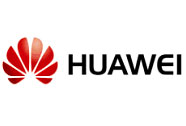 Human history and civilization’s advancement are also a history of scientific and technological development. Numerous ICT technologies over the past half century, culminating in various ingenious Internet innovations, have shattered the limits of time and space, bringing the human civilization into an unprecedented new frontier. Today, we enter a time of omnipresent networking and information. However, this is only the start of a greater information revolution. We are at the door to the next wave of digital society.
Human history and civilization’s advancement are also a history of scientific and technological development. Numerous ICT technologies over the past half century, culminating in various ingenious Internet innovations, have shattered the limits of time and space, bringing the human civilization into an unprecedented new frontier. Today, we enter a time of omnipresent networking and information. However, this is only the start of a greater information revolution. We are at the door to the next wave of digital society.
Today, we are living in a time of Internet and information omnipresence, but the digital and physical worlds are still parallel to each other and not so intertwined. For all industries and enterprises, “Internet+” will be the focus of innovation. Traditional industries and enterprises are in particular need to realize digital reformation by leveraging the power of the Internet, driving deeper integration of the physical and digital worlds. This has become a new growth trend for them.
The essence of the Internet is being connected anytime, anywhere. Being an infrastructure element just like the power grid, the Internet has greatly boosted social productivity and reduced cost. However, the value of the Internet is far more than providing connectivity. Its impact is profound & revolutionizing, as it represents a brand new mindset, with the core being “all connected at zero distance” among people, enterprises and their customers, and business partners.
Therefore, enterprises must restructure their mindset first, and their business, marketing, R&D, operation, and service models, based on the Internet rather than simply overlaying traditional models with the Internet as a tool. Among them, restructuring of mindset is of paramount importance, as action comes after that.
Business processes, though complicated, mainly comprise value creation and value delivery. Value delivery is what we usually refer to as information flow, capital flow and logistics flow. All the three flows have been smoothed out through mushrooming e-commerce platforms. In other words, the Internet has fully infiltrated and transformed the value delivery process. The digital and physical worlds are merged and integrated, and the business chain is restructured, reducing or even eliminating many intermediate processes.
Currently, the Internet is starting its infiltration into value creation, especially the R&D and manufacturing fields. This infiltration is comprehensive. It has a technical dimension, as we see in the case of Tesla redefining automobiles using IT and the Internet. It also implies changes in the R&D model, toward, for example, user participation and crowd sourcing. The manufacturing field is not immune to this. After the steam engine, electricity, and IT, the Internet is driving the fourth Industrial Revolution, or Industry 4.0, enabling the integration of efficient mass production with the diversity of individualized manual workshops. With the infiltration of the Internet and ICT into the value creation field, the integration of the digital and physical worlds goes deeper. Transformation of traditional industries has just begun.





